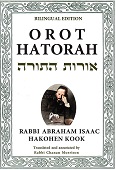
Even King Solomon, renowned for his profound wisdom, failed to grasp its meaning. “I thought I would attain wisdom,” he admitted, “but it is distant from me” (Ecc. 7:23).
What was it that eluded Solomon’s powerful intellect? The Talmud in Niddah 9a explains that he was referring to the Parah Adumah, the red heifer whose ashes were used for ritual purification. The true meaning of this ritual is uniquely profound, beyond the grasp of the human intellect.
Why is this mitzvah so difficult to understand?
Repairing the Sin of the Golden Calf
According to the Sages, the Parah Adumah comes to atone for the Sin of the Golden Calf. The Midrash (Bamidbar Rabbah 19:8) explains this by way of a parable: when the maidservant’s son sullied the king’s palace, it was his mother who needed to come and clean up the mess.
What exactly is the connection between the ritual of the Red Heifer and the Sin of the Golden Calf? After all, the golden calf was formed out of gold jewelry donated by the people; it was not born to a cow.
What was the essence of the Sin of the Golden Calf? Rabbi Yehuda HaLevi (Kuzari 1:97) and other medieval commentators explained that only when taking into account the unique spiritual level of the Jewish people at that time does their action count as a grievous offense. For other peoples, not only would it not have been deemed a sin, it might have even been considered a meritorious deed.
The people’s motivations were sincere. They did not wish to abandon God. On the contrary, they sought to remain close to Him. They created an image — the prevalent form of worship at that time, like a house of prayer nowadays — in order to have a tangible focal point toward which they could direct their offerings and prayers. Even those who erred by praying directly to the golden image did not reject God. They announced, “O Israel! This is your God, Who brought you out of Egypt” (Ex. 32:8).
If so, what was their mistake? They erred in their attempt to gain closeness to God through actions dictated by their own logic and reasoning. God specifically forbade this form of worship. The image they created — despite their good intentions — contradicted God’s command, and it became a stumbling block for those who worshipped the Golden Calf as an actual idol.
Understanding God’s Rule
Why did God forbid us from using our powers of reason to establish new mitzvot and modify existing ones, using methods that, according to our understanding, would allow us to become closer to God?
If we want to know what God wants, we need to examine His actions and the ways through which He governs the world. Theoretically, the percipient individual should be able to discern wonderful aspects of God’s rule of the universe, and thereby understand His ways and Divine Will. This would work had God organized creation in such a way that all paths leading to the final goal reflect Divine perfection. Then all aspects of the universe would provide an accurate understanding of God and His Will, allowing us to recognize the proper way to serve Him.
God, however, in His lofty wisdom, organized the universe differently. He decreed that purity might be the end result of impure paths. Even those means which contravene God’s Will will lead toward the final goal. Thus it is impossible to deduce what God truly wants simply by observing the ways of the world. Our service of God can only be guided by those directives which God explicitly transmitted through His Torah.
Acknowledging Our Limitations
How is this connected to the purifying ashes of the Red Heifer? Purity and impurity are a function of closeness or distance from God. True purity is the ability to draw near to God and fulfill His will. Death, on the other hand, is avi avot ha-tum'ah, the primary source of impurity. Death is an example of a phenomenon in the world that is diametrically opposed to the genuine intention of God, Who desires life. A person noting the phenomenon of death could deduce the exact opposite of God’s true intention in the world, concluding that God does not wish that His creations live.
How do we purify ourselves from the impurity of death? To correct the misleading impression of death, we need to recognize the limits of the human intellect in understanding God’s rule in the world. By performing the ritual of Parah Adumah, a mitzvah that by definition transcends logic, we acknowledge the limitations of our intellect, and avoid the pitfall of inferring God’s will from the phenomenon of death.
We can also understand why those who prepare the purifying ashes of the Red Heifer become defiled in the process. God’s Will cannot be deduced from the ways of the world, only from the final goal; so too, the process of the Parah Adumah generates impurity, and only the end result provides purification.
(Sapphire from the Land of Israel. Adapted from Midbar Shur, pp. 317-320)





